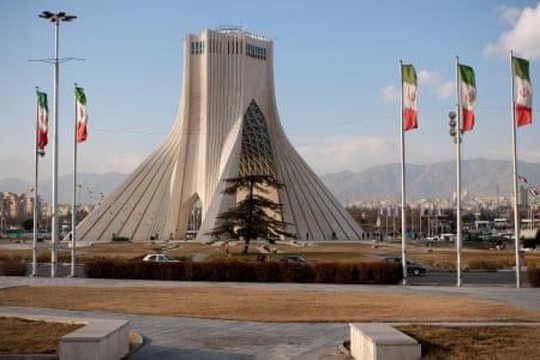Azadi Tower, one of the important sights to Iran Which is located in the Iranian capital Tehran
The Wall Street Journal reported from Tehran that “a lethal crackdown and an ailing economy have quieted anti-government street demonstrations organised protests have largely tapered off.” The paradox is, this interpretation is widely applicable in the contemporary world situation, including many G7 countries. How can one pretend there are no “protestor grievances” in Britain or France today, and, yet, how come they are mute? – asks Indian Ambassador and prominent international observer M.K. Bhadrakumar.
The western narrative never cared to admit that Iran is ruled by elected governments. The big question is, would such street violence have erupted in Iran without the covert support and coordination by foreign intelligence agencies? It is pointless to discuss Iran’s politics while in denial mode about the whole history of foreign interference in that country’s internal affairs.
Meanwhile, Associated Press reported that Iran and Russia are also moving toward linking their banking systems, turning their back on the petrodollar. Read the US Energy Information Administration data o know why the AP report matters. Simply put, almost a quarter of the world’s oil reserves and around 40 percent of the world’s gas reserves may potentially be traded outside the western banking system if Russian and Iranian policies work in tandem, dealing a body blow to the “world currency,” American dollar.
Suffice to say, there is no question that the protests in Iran were a western reaction to the emerging alliance between Iran and Russia. Now that the protests over hijab have “tapered off,” the modus operandi will shift from colour revolution back to the classic mode of sabotage and assassinations (especially after Benjamin Netanyahu’s return to power in Israel.)
The burgeoning military cooperation between Iran and Russia puts Tehran on Washington’s crosshairs. In the context of the Ukraine conflict, the West see Iran in a new way. Indeed, the Russian interest in getting Iran on board the Moscow-brokered process of Turkish-Syrian rapprochement underscores that the Kremlin has jettisoned whatever past reserve it would had about aligning with Iran in geopolitical projects.
Foreign Minister Sergey Lavrov stated at a press conference with the visiting Egyptian Foreign Minister Sameh Shoukry in Moscow that “Russia, Iran, and Turkey are members of the ‘Astana troika’, which has been handling the Syrian settlement. Therefore, I consider it absolutely logical that any further communication on bringing relations between Turkey and Syria back to normal will also involve Russia and Iran.”
Turkish President Recep Erdogan’s foreign policy advisor Ibrahim Kalin has said: “We are pleased that Iran is joining this process. Iran is an important side. I think it will be able to contribute to this process. The participation of Iran in the negotiating process, which is held with the mediation of Russia, will make it easier.”
Unsurprisingly, a convergence of interests between the US, Israel and Kurds (and Kiev) to settle scores with Iran is only to be expected. The early signs are already there.
According to Iran’s defence ministry, three drones were involved in the attack at about midnight on a military facility in the city of Isfahan. It said one drone was destroyed by air defence systems and two were caught by “defence traps”, causing minor damage to a building. There were no casualties.
Pentagon spokesperson Brig Gen Patrick Ryder promptly said ‘the US military played no part in the strikes,’ but declined to speculate further.
However, Wall Street Journal quoted unnamed “US officials and people familiar with the operation” as saying Israel had carried out the attack. The New York Times also named Mossad, Israel’s intelligence service, citing “senior (US) intelligence officials”.
Isfahan province is home to a large air base, a major missile production complex and several nuclear sites. Iran’s official Irna news agency said the drones had targeted an ammunition manufacturing plant. The BBC highlighted that “The attack comes amid heightened tensions over Iran’s nuclear programme and its supply of arms to Russia’s war in Ukraine.”
However, a stunning dimension to this sordid affair is that a top aide to the Ukrainian president Zelensky linked the Isfahan attack to the alleged supply of Iranian drones to Russia. An unnamed Iranian official has since reacted that unless Kiev disowned any such linkage, Tehran too may adopt “a new approach that is appropriate to the behaviour of the Kiev government.”
Not much ingenuity is needed to connect the dots in the Isfahan attack — Ukrainian and Israeli intelligence (and the American masterminds in Kiev) operated through the Kurdish groups based in Iraqi Kurdistan, which have long-standing links to both the US and Mossad, and “sleeper cells” within Iran.
The bottomline is that – today almost anything concerning Iran’s security would have a foreign dimension.
read more in our Telegram-channel https://t.me/The_International_Affairs

 11:42 03.02.2023 •
11:42 03.02.2023 •























